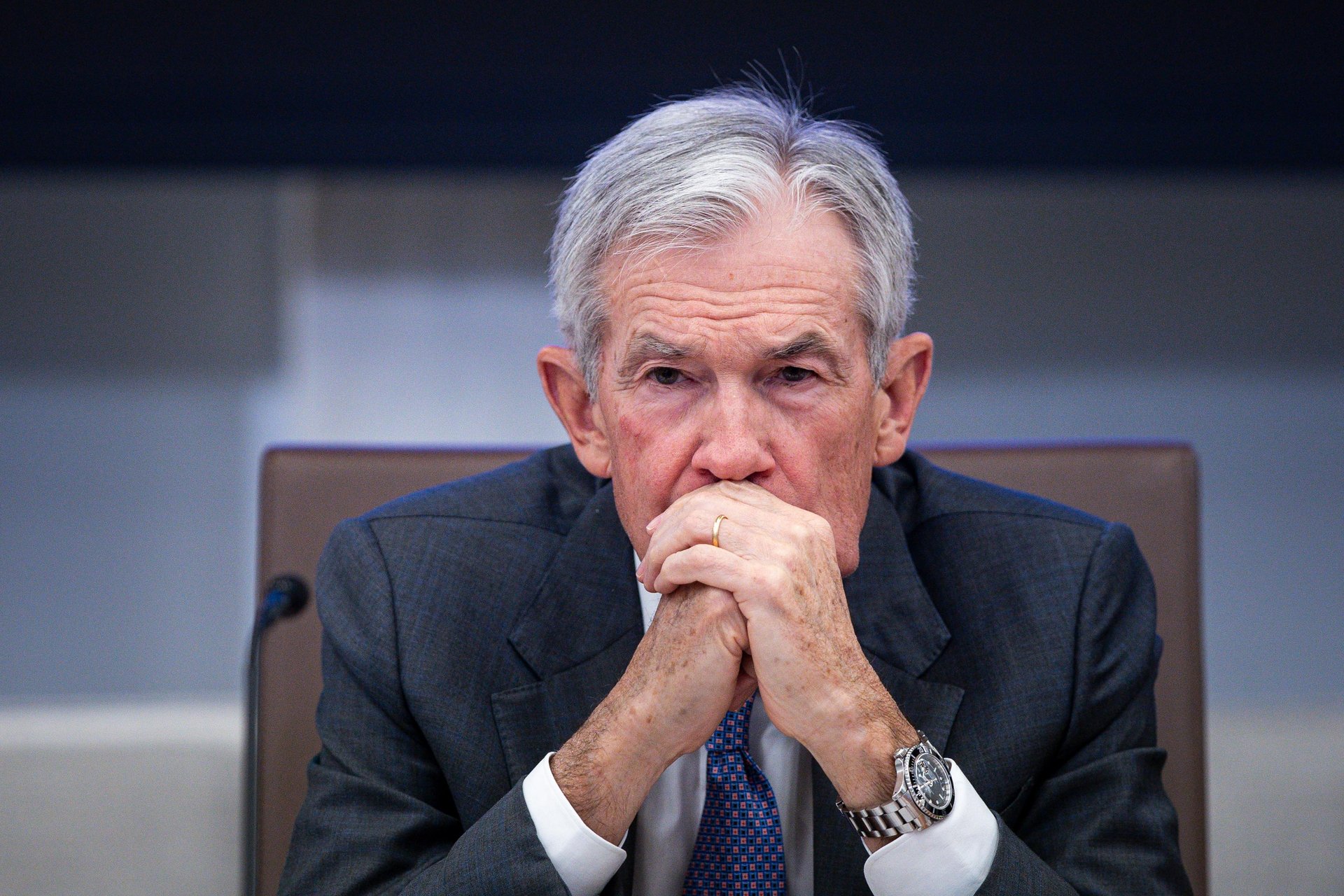The Fed cuts interest rates — but Powell says another cut isn't a sure thing
Wall Street had already priced in the move, even as the government shutdown deprives policymakers of data — but a "fog" could impede further cuts

Al Drago/Bloomberg via Getty Images
The Federal Reserve concluded its two-day policy meeting on Wednesday, with officials announcing a cut to the benchmark interest rate of 25 basis points, taking the rate to its lowest level since 2022.
Suggested Reading
The move follows September's 25 basis-point cut. And it's likewise one that Wall Street had already priced in with near certainty. Prediction markets had put the odds of a cut at 96% heading into the meeting, even as a month-long government shutdown deprived policymakers of most official data, including the typically all-important jobs report.
Related Content
Why even private data has been hard to come by
Private data has been lacking in recent weeks. After Federal Reserve Governor Christopher Waller mentioned in an August speech that the Fed uses ADP data — information the company had long provided as a public service — ADP ended the longstanding arrangement. No motive is known, but this week, Sen. Elizabeth Warren (D-Mass.) asked ADP to explain the change, noting how the Fed is "flying blind," and elsewhere noting that "private sector layoff announcements" continue to "pile up."
Publicly published indicators — including ADP’s — have pointed to a challenging labor market, which Fed Chair Jerome Powell cited as a primary reason for the September cut. ADP reported a 32,000 drop in private-sector payrolls in September, while preliminary data, also from ADP, suggests a possible return to modest jobs growth in October. Meanwhile, the Bureau of Labor Statistics released new inflation data — tied to social security payments — showing that the consumer price index rose 3% year-over-year, reflecting more modest inflation than many had expected.
Announcement to be followed by press conference
The Fed released its decision at 2:00 p.m. E.T. Powell addressed reporters at 2:30, fielding questions about how the central bank is handling limited visibility, about the AI boom and its relationship to household wealth, and about whether President Donald Trump's tariffs are driving more than a one-time increase in prices. Alongside the aggressive trade policy, Trump has repeatedly called on the Fed to make deeper, faster rate cuts, even as experts caution that moving too quickly risks reigniting inflation.
Markets headed toward the close with the major indexes moving into the red. Still, amid a banner week for tech earnings, stocks are hovering at or near all-time highs, with Apple crossing the $4 trillion market cap mark on Tuesday and Nvidia crossing the $5 trillion mark on Wednesday. Treasury yields have already adjusted to the expectation of easier policy through year-end, too, while prediction markets suggest a further 25 basis-point reduction in December.
However, in his remarks, Powell made clear that a December rate cut is not a "foregone conclusion," in fact "far from it." Stocks appeared to move downward in time with those comments.
Sharply divided Fed looks to December
Powell spoke of deep divisions within the committee and a fiercely divided outlook on the future, most specifically regarding the possibility of a further cut in 2025. Powell is an official whose comments are always measured, even muted, so as Ben Casselman of the New York Times surmised, it seems well possible that this was in fact "a knock-down, drag-out meeting."
"What do you do if you're driving in the fog?" Powell responded rhetorically, fielding a reporter's question about whether a continued shutdown would factor into the December decision. "You slow down," he said, suggesting that if the lack of data continues, it has the potential to force the central bank to delay further cuts.
